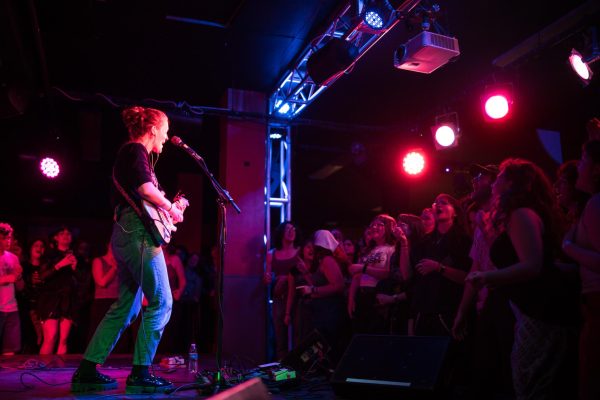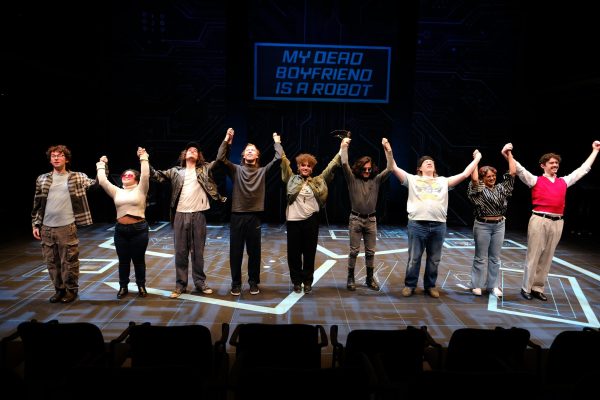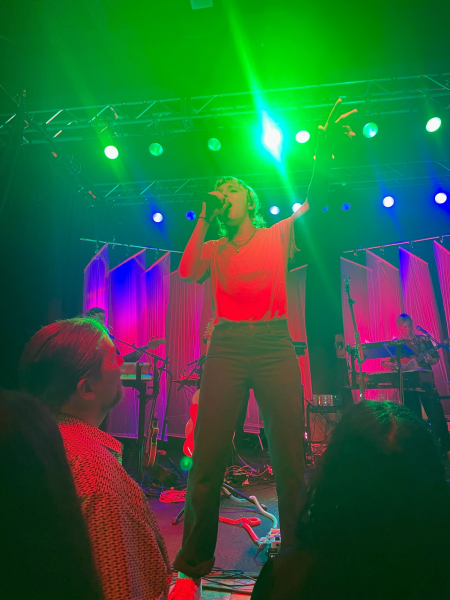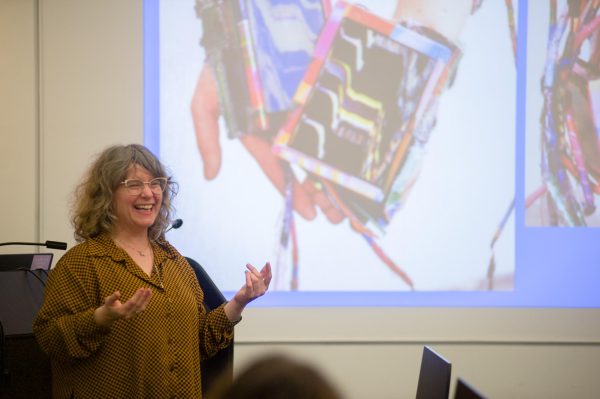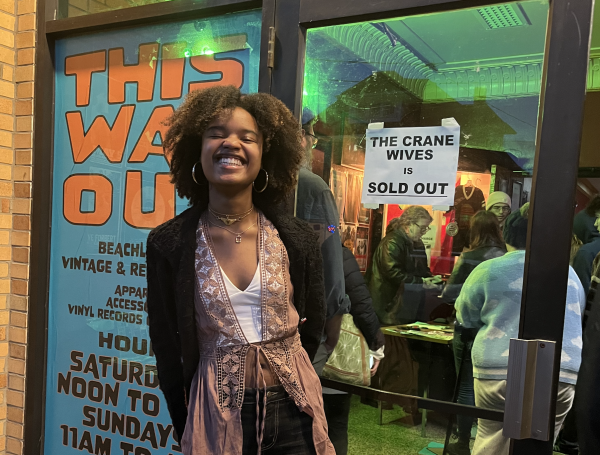OINC Showcases Unconventional Improv Performance
When I went to attend the Oberlin Improvisation and New Music Collective’s latest performance at the Birenbaum Innovation and Performance Space on Wednesday night, I had no idea what to expect. I had never seen the OINC before, and when I thought of improv shows, I imagined fast-paced jokes on a dimly-lit stage or silly songs composed on the fly — the sorts of things that friends sometimes do together when everyone is bored and has had a little too much to drink. The OINC’s performance was unlike anything I had imagined.
The show consisted of two main acts. The first improvisation was carried out by two musicians, who used synthesizers to engineer a variety of innovative sounds together. These were not songs by any stretch of the imagination; in fact, I found myself hard pressed to call the performance “music” in the traditional sense of the word. Lacking both a tune and a discernible pattern, it nevertheless presented a fascinating, unpredictable combination of noises. At one moment, the performers could fixate on one type of sound, like static pops, while a minute later, they switched to robotic beeping instead. Nothing seemed to be off the table, and so I like to think that we were being presented not with improvised music, but improvised sound.
Even though the lack of structure allowed the musicians to demonstrate a great deal of innovation, that performance ultimately lacked direction. The novelty of new sounds quickly wore off and without a clear point or theme to tie the different pieces together, the combinations of sound occasionally felt random. In fact, toward the end of the performance, I was beginning to feel as though I were just listening to bizarre white noise.
The second act was where the OINC truly began to shine. First, the performers gathered on stage to introduce themselves and the instruments that they would be using. These ranged from relatively conventional choices like a harp and a drum set, to modular synthesizers, to entirely unconventional contraptions, like several bottles filled with marbles or a staticky old TV.
The creativity of these instruments immediately struck me as one of the most interesting things that I saw throughout the performance. I could hardly imagine how each performer must have practiced playing with such unusual tools, many of them apparently hand-built.
The performance itself proved to be as innovative and varied as the instruments. Just like before, the sound had none of the usual characteristics that might classify it as a song. However, with so many different types of noise playing off of each other, the performers were able to engineer something that was unlike any music I had ever heard. Each time a new type of sound was introduced, I found that I was unable to stop myself from taking notice.
Ultimately, the greatest moments came when the different musicians worked together. Synchronization gave this act its direction — sometimes, when I saw the performers look at each other, I could practically see a conversation taking place without words. Their instruments did all of the talking for them.
“It’s all about listening and communicating with other players,” said Conservatory sophomore Rachel Gibson, who performed with the ensemble. “It’s different from other ensembles because we’re not using music. We’re just relying on listening to others. I’ve been doing this for two semesters now. I think it’s a really good way to be really free from traditional music that’s written.”
While the second half of the evening had more direction than the first, it also suffered from a lack of cohesion. The performers did not always work together as well as they could have, and this led to occasional periods in which a single type of sound began to dominate the performance. Lacking novelty, these periods were generally unmemorable and bordered on monotony.
For this reason, the OINC’s best work appeared in the first half of each act. Here, their creativity was most apparent, and their innovative explorations of noise were what ultimately made the performance worth seeing. The point was not the sound in itself — it lay in watching how the performance was made, and seeing the creativity behind every aspect, from the instruments to the performers themselves.


